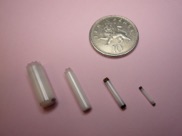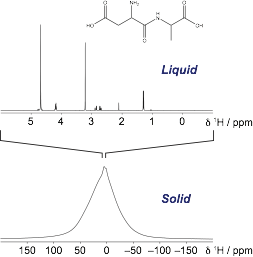High-resolution methods for quadrupolar nuclei

NMR is an excellent probe of local structure and dynamics. However, in solids, the orientational dependence of many interactions (averaged in liquids by molecular motion) result in large anisotropic broadening and uninformative spectra.

In 1995, multiple-quantum MAS (MQMAS) was introduced, enabling the acquisition of high-resolution spectra in a two-dimensional experiment. Although commonly used, MQMAS does suffer from poor sensitivity, a problem the newly introduced satellite-transition (STMAS) experiment attempts to overcome. Whilst more sensitive, STMAS is much more difficult to implement.
Much effort is focussed on improving the resolution of solid-state NMR. For spin I = 1/2 nuclei, magic-angle spinning (MAS), rapidly spinning the sample at 54.736° to the magnetic field, is able to remove the broadening. For quadrupolar nuclei (I > 1/2) MAS is not able to fully remove the broadening and resolution remains compromised.
87Rb MQMAS spectrum of RbNO3


Much of our work is focussed on improving MQMAS and STMAS, adapting them to obtain site-specific structural information and combining them with magnetization transfer techniques.

